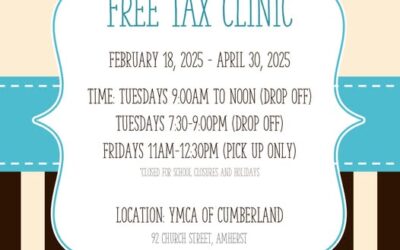
March 31, 2025
Municipality of Cumberland approves $41-million operating budget, $14.3-million capital budget
The Municipality of Cumberland approved a $41-million operating budget and a $14.3-million capital budget at a special online meeting on Monday, March 31, 2025.
It was the first time in recent memory that the municipality’s operating and capital budgets have been brought forward for council’s consideration and final approval prior to the beginning of the fiscal year.
The municipality’s commercial assessment values remained relatively flat this year, but residential capped assessment grew by about seven per cent. With the Property Valuation Services Corporation setting the assessment cap at 1.5 per cent, real residential assessment growth, or new assessment, was about 5.5 per cent. This growth produced about $1.5 million in additional tax revenue.
Mandatory costs for policing, education, Property Valuation Services Corporation, and provincial roads increased by an estimated $936,000, with education costs up a whopping $586,000 coming in at $6.5 million. Salary and benefits costs rose by about $374,000 due to CPI adjustments for staff and increased pension, benefits and WCB costs. One new position, an Occupational Health & Safety Coordinator was also recommended.
The provision of fire protection is one of the municipality’s significant cost drivers. The municipality supports 16 volunteer fire departments, operating over 90 individual trucks and pieces of equipment essential to the fire service.
In addition, the municipality makes payments under agreement with three fire other departments in Amherst, Oxford and Five Islands.
The annual budget this year for the fire service is just over $3 million. It is estimated that operating costs alone in the fire service will rise by about $200,000
The increased costs of postage, insurance, electricity and other miscellaneous services and inputs accounted for about $260,000. It is also estimating that costs related to solid waste management – collection, tip fees and transfer stations – will rise by about $150,000.
The capital budget for 2025-26 comes in at $14.3 million, with just over $9 million of that being spent on fire buildings, apparatus (trucks) and equipment.
An additional $3 million is earmarked for building, vehicles, equipment, and infrastructure like sewage treatment plants, while another $1.15 million, funded by gas tax, is set aside for capital paving.
The capital budget is funded from operations, reserves, the Canada Community Building Fund (gas tax), and planned long term debt of $2 million.
In presenting the budget, CAO Greg Herrett told council there are some financial challenges on the horizon.
“Continuing to fund contributions to major community projects, finding the funds to pay for the ongoing replacement of fire trucks, buildings and equipment and maintaining over $700 million worth of municipal infrastructure – all while maintaining healthy levels of long-term debt and operating and capital reserves – are all unsustainable without additional sources of funding,” CAO Herrett said.
To address these long-term challenges, council unanimously approved an increase of three cents per $100 of assessment to the general residential and commercial tax rates for the 2025/26 fiscal year, resulting in a general residential rate of $1.17 per $100 and commercial general rate of $2.74 per hundred. Property owners in the former towns of Springhill and Parrsboro also pay area rates in addition to the general rate. The area rates were unchanged. An increase of 3 cents per hundred amounts to $30 per year on a $100,000 home. Combined with the assessment capped increase of 1.5%, the overall increase is approximately 4.2% for residential property owners who qualify for the assessment cap.
This increase will allow the municipality to fund most of the major community project requests it has received, increase contributions to capital reserves to address infrastructure renewal and, combined with anticipated EPR revenues, begin to provide funds for capital spending to support fire service.
Speaking for Council, Mayor Rod Gilroy said, “we don’t make these changes lightly, but the cost of all our inputs have gone up, just like every other organization.
“As well, it’s critical that we continue to support our communities with contributions to major projects and continue to invest in the fire service as we implement our hub model of fire protection. We also must continue to maintain and renew our municipal infrastructure and the cost of doing that has increased exponentially over the past few years”
Fullscreen Mode



